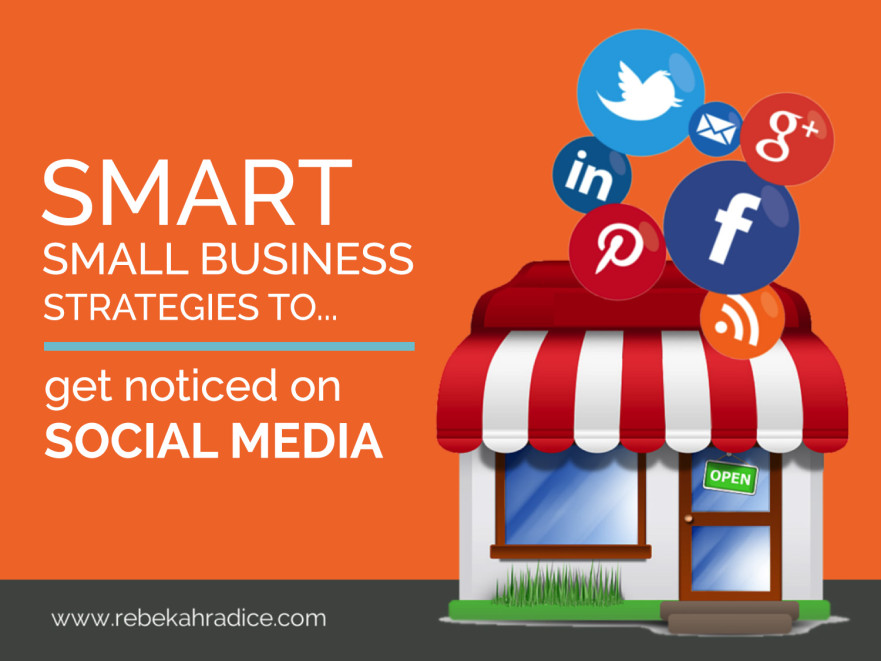Marketing your small business on social media continues to evolve.
As consumers actively look to sites like Facebook, Twitter and Google Plus prior to making purchase decisions, it’s no longer a matter of if you should get active, but how fast you can create a viable presence.
In fact, if you’re a local or small business, you can no longer afford to avoid social media.
With 97% of consumers using the Internet as a resource, building your social media presence is a critical component in your overall marketing strategy.
Producing quality content, whether it’s created or curated, is essential to promoting and growing your business online.
However, starting out on social media — or accelerating your current presence — can feel overwhelming.
Social media sites such as Facebook and Twitter are excellent conversation facilitators, but knowing how to navigate them effectively stumps even the most seasoned online marketers.
That’s why it’s so important that you know where to begin.
I recently had the chance to speak with a group of college students about managing social media for small businesses.
Below you’ll find the presentation — along with ideas to help you jumpstart a new social media campaign or reinvent your current strategy.
Get Noticed on Social Media
1. Know Your Goals
Define your goals and then put them in writing. As Dr. Gail Matthews, a psychology professor at Dominican University in California found — writing down your goals makes a significant difference.
In a goal-setting study that included 267 participants, Dr. Matthews found that,
Those who wrote down their goals were 42 percent more likely to achieve them.
Who wouldn’t want those odds — especially when it comes to building your business?
If you’re to get clear about your goals, answer each of these questions first.
Goal-Setting Questions
- What type of social media followers/fans do you want?
- What makes you unique? Translate that into your social media profiles. From Facebook to Twitter and Google Plus, your message should be consistent across all channels.
- How much time can you commit to managing your social media? Will you need to outsource to a company or virtual assistant?
- What results are you hoping to achieve? (increased exposure, leads, traffic)
2. Listen and Respond
As you begin to venture into social media, making new connections is critical to your online health.
Begin by listening to what is being said in and around your industry or niche. Pay attention to what the needs of your potential clients are.
Then begin to join in the conversation. The only way you can create meaningful relationships is to consistently engage.
And I don’t mean talking “at” people. Instead, talk “with” the community you’re building. They’re real people that need to know you value their opinion.
Ask questions, and then listen to the response.. Focus on what is important to them and then share content that meets a need or solves a problem.
Someone who shines when it comes to knowing and understanding her audience is Kim Garst. Watch how Kim interacts with her fans and followers.
Do you see the difference between someone who’s actively participating and someone who is simply blasting a message? It’s an art every small business should work to perfect.
✫‿✫ Before you speak, listen. Before you write, think. Before you spend, earn. Before you invest, investigate, Before you criticize, wait.
— Kim Garst ツ (@kimgarst) March 13, 2015
@InsLud or Listerine  — Kim Garst ツ (@kimgarst) March 13, 2015
— Kim Garst ツ (@kimgarst) March 13, 2015
3. Build Relationships, Don’t Just Collect Numbers
This one falls in line with the last. As you start to share content across your social media platforms, focus on building relationships.
If you constantly send out boring data or confusing statistics, but you don’t talk and engage with the people in a meaningful way — you’ve shot yourself in the foot.
Basically, you’re talking to a brick wall.
It is considered poor social media etiquette if you don’t interact. Stop shouting at your fans and followers and get into the conversation.
I’m always impressed with the team at Sprout Social. As a company focused on providing a robust social media management tool, Sprout Social walks the talk.
Just browse through their Twitter stream and you’ll see how interactive and responsive they are.
@DahliaElGazzar Hi, Dahlia! You can find more info about our webinars here: http://t.co/Q2vjBhlyO5. We appreciate the #SproutLove!
— Sprout Social (@SproutSocial) March 15, 2015
4. Post Consistently
Your updates on Facebook, Google Plus, Twitter, LinkedIn, Instagram and Pinterest need to be hyper-focused on your target market.
They also need to happen on a consistent basis. Create a schedule that easily works into your day.
Tools like Buffer can help you manage your content and share without fail. Then integrate your account with tools like IFTTT (If This Then That) to create rules for specific actions.
For example, every time I post a new article, the link is sent to my Buffer account and scheduled to tweet.
Written by Rebekah Radice. To read the full article, click here. For more information on creating your own online brand, custom WordPress website and social media strategy, please visit us at www.mydigibrand.com and follow us everywhere @mydigitalbrand.

